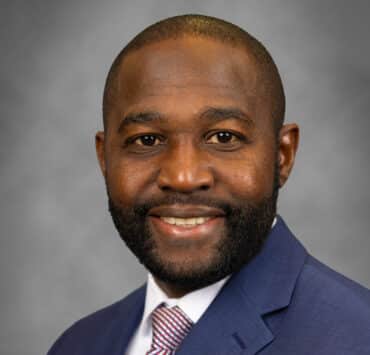|
Getting your Trinity Audio player ready...
|
Hospital administrators know the game all too well. Every few years, newly elected leaders pass legislation that has a major impact on their work. New regulations and changing rules alter payment rates and reimbursement schedules. A fluctuating landscape means health systems and medical facilities need top-notch revenue cycle management leaders that can optimize efforts and drive performance to maximize results.
That’s especially true at organizations like Ochsner Health that have ambitious service-related missions. Ochsner, Louisiana’s integrated healthcare system founded in 1942, exists to “Serve, heal, lead, educate, and innovate.” It can’t fulfill that mission and operate its forty hospitals, 300 health centers, and a robust digital health system to serve patients in the region unless its revenue cycle is sound and sustainable.
Stephanie Wells is the system vice president for Revenue Cycle and Health Information Management for Ochsner Health System. The CPA and former Deloitte auditor joined the system eleven years ago as assistant vice president and was soon promoted to VP.
Wells studied accounting at the University of New Orleans and is an adjunct instructor at Tulane’s Master of Health Administration program.
According to Brad Rennick, chief customer officer, at FinThrive, “We at FinThrive are honored to have two decades of partnership with Ochsner Health. Stephanie Wells’ has a collaborative leadership style, which encourages innovation. Oschner also shares business insights industry-wide to encourage others to take an innovative and data-driven approach to their revenue management.”
Recent developments have forced leaders like Wells to prioritize innovation more than ever before. In April 2022, Ochsner Health announced its use of a new tool designed to improve workflow.
The medical coding engine for automation comes from Nym Health, a New York City company. Together, its technologists, engineers, and physicians are “transforming clinical language into actionable information that brings greater accuracy and efficiency to medical billing.”
Nym is doing exactly that for Ochsner Health’s emergency departments. “We’re focused on simplifying complexity and building the capacity and scalability to meet future needs, such as those associated with resourcing, dynamic workflows, and rapidly growing visit volumes across the continuum of care,” Vicki Kaplan, vice president, coding and HIM said in a press release.
The company’s powerful engine removes the need for human intervention as it codes charts. According to a company website, “For each chart it fully understands, Nym’s engine instantly and accurately assigns ICD-10 and CPT codes for billing.” Any charts left unhanded are then flagged for humans to code.
This area is one Ochsner has prioritized for some time. The health system has offered a revenue cycle fellowship program since 2015. The intensive, two-year program helps candidates meet certain objectives and emerge as potential leaders.
First, candidates are paired with mentors and encouraged to form strong bonds with peers. However, not all candidates have mentors from their concentration. They may be paired with mentors from other areas like finance, which managers say brings a broad view of issues and challenges that will likely arise throughout one’s career.
In the first year, candidates visit facilities to encounter leaders and executives before starting rotations in numerous operational areas. A hands-on tour through the entire revenue cycle provides a detailed experience.
Next, in year two, candidates identify and complete projects in partnership with others in their growing professional networks. All Ochsner revenue cycle fellows become Lean Six Sigma Green Belts.
A strong revenue cycle operations team ensures Ochsner can serve its patients on a daily basis and also step up in unexpected times of crisis. By the end of 2021, health system employees had completed more than two million COVID-19 tests, treated and discharged 17,710 COVID patients, and administered 65,045 vaccines. In the same year, they supported Hurricane Ida storm recovery and served as essential personnel in the field.
Heavy rain and 150 mile-an-hour winds flooded an ICU and tested all parts of Ochsner. While CFO Pete November and Executive Vice President and Chief Risk and Human Resources Officer Tracey Schiro worked to make fuel available to employees on site, clinical leaders put COVID patients in the ER and non-COVID patients in the lobby. Neurosurgery resident Dr. Joseph Lockwood recalls treating a patient with two blood clots on the brain as he watched water seep in the main campus facility, which briefly lost power moments before the lifesaving procedure. He and Dr. Roger Smith completed a successful craniotomy.
In the 2021 annual report, Smith says, “Ochsner is full of heroes—no doubt about it. If a storm happens, we are prepared to take care of it. That’s what we are here for.” Effective revenue cycle management helps make it all possible to normal and unprecedented times alike.

